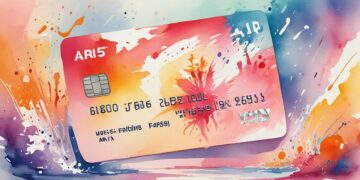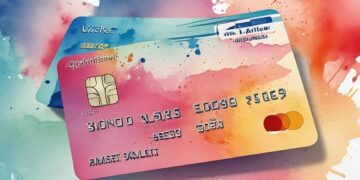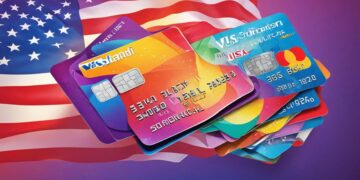How to Avoid High Interest Rates on American Credit Cards

Understanding Credit Card Interest Rates
Credit cards can be a double-edged sword. While they offer convenience and rewards, they can also lead to hefty financial burdens if not managed wisely. The allure of instant purchasing power is often overshadowed by the reality of accumulating debt, primarily driven by high interest rates. Many consumers may not realize that these rates can significantly inflame the total cost of their purchases over time, leading to serious financial repercussions.
One of the most significant drawbacks is the high interest rates that often accompany credit card debt. In fact, the average annual percentage rate (APR) for credit cards in the United States hovers around 20% or more depending on various factors such as credit score, issuer policies, and economic conditions. This means that for every $1,000 you put on a credit card, you could end up paying over $200 in interest if you only make minimum payments over a year.
Why It’s Crucial to Avoid High Rates
Understanding how to navigate credit card interest rates can save you significant money over time. The impact of high interest rates is multifaceted and can deeply affect your financial health. Here are some key implications of dealing with such rates:
- Increased monthly payments: High interest rates lead to larger payments due each month. If you are carrying a balance, those charges can add up quickly, pushing your budget to its limits.
- Longer repayment periods: When interest creeps in, the time it takes to pay off your debt can extend significantly. This means that what might seem like a manageable purchase can linger in your life for years, each month eating into your disposable income.
- Higher total repayment amounts: Over time, a high interest rate can cause you to pay much more than the original purchase price. A $500 payment could end up costing you over $750 if left unpaid for just a year at a 20% interest rate.
Considering the impact it has on overall financial well-being, it’s essential to take proactive steps in managing your credit. Here are some effective approaches to help you steer clear of those unnerving rates:
- Research introductory offers and low-rate cards: Many credit cards come with promotional rates, often as low as 0% APR for the first year. Shopping around and comparing offers can lead to substantial savings.
- Maintain a strong credit score: A higher credit score not only increases your chances of being approved for better rates but also helps you secure lower interest rates overall. Regularly reviewing your credit report for inaccuracies can bolster your score.
- Understand your billing cycle: Knowing when your billing cycle resets can help you time your payments better, allowing you to avoid interest on new charges if the balance is paid in full each month.
By implementing these strategies, you can create a more financially stable future and avoid the pitfalls of high credit card interest. Investing time in understanding credit card terms and dedicatedly managing your account can be the difference between financial stability and overwhelming debt. The journey to financial literacy starts here, and every piece of knowledge brings you one step closer to mastering your finances. Explore, research, and continually educate yourself to embark on this essential financial journey.
SEE ALSO: Click here to read another article
Smart Credit Card Management Practices
Understanding the factors that influence credit card interest rates is key to keeping your financial life in check. Making informed decisions can protect you from falling into the trap of high interest and excessive debt. Here, we delve into actionable steps you can take today to minimize or even eliminate those burdensome charges on your credit cards.
Evaluate Your Current Credit Card Offers
The first step to avoiding high interest rates is to regularly evaluate your current credit card offers. Many consumers fail to recognize that credit card terms can change frequently, affecting both your APR and potential rewards. Here’s what you should consider:
- Review Annual Percentage Rates (APRs): Check the APR on your existing cards. It’s not uncommon for issuers to offer lower rates for new customers. Depending on your creditworthiness, you might be eligible to switch to a card with a significantly lower rate.
- Consider Balance Transfers: If you currently hold a card with a high interest rate, look into balance transfer offers that feature lower introductory rates. Many cards offer 0% APR for a set duration, allowing you to pay down your existing balance without accumulating additional interest.
- Take Advantage of Rewards Programs: Some credit cards offer programs that can provide cashback or other incentives for your spending. However, it’s essential not to let the allure of rewards overshadow the importance of managing costs associated with high interest rates.
Additionally, monitoring promotional rates is a vital component of managing credit effectively. Many credit card companies offer enticing sign-up bonuses, which can temporarily lower your interest rates. Make sure to compare these offerings and understand the terms to maximize your financial gain.
Strengthen Your Financial Profile
Another effective approach to securing lower credit card interest rates is to focus on your credit score. Keeping a strong credit score is not only beneficial for obtaining loan approvals but also for obtaining competitive interest rates. Here are some tips to improve your credit profile:
- Make Payments on Time: Always pay your credit card bill on or before the due date. Late payments can lead to automatic interest rate hikes, ranging anywhere from 1% to 10% or more, depending on the issuer.
- Reduce Your Credit Utilization Ratio: Aim to keep your credit utilization below 30%. This means if you have a credit limit of $1,000, maintain your balance below $300. Higher utilization rates can signal financial distress to credit bureaus.
- Limit New Credit Applications: While it’s important to shop around for the best rates, applying for multiple lines of credit within a short period can negatively impact your credit score, potentially leading to higher interest rates on future borrowing.
By diligently evaluating your current financial situation and taking positive steps towards strengthening your credit profile, you can pave the way to lower interest rates and create a more robust foundation for your financial future. The journey may require time and discipline, but the payoff—both in peace of mind and financial security—can be substantial.
CHECK OUT: Click here to explore more
Creating a Smart Spending Strategy
Managing your credit card debt effectively involves not just evaluating your existing cards and credit score, but also developing a savvy spending strategy that aligns with your financial goals. Understanding how to use your credit card wisely can go a long way in preventing high interest rates and maximizing your purchasing power. Let’s explore some strategies that can help you take control of your finances.
Utilize Credit Card Features Wisely
Credit cards come with a plethora of features that can aid in avoiding high interest charges. Familiarizing yourself with these can help you optimize your credit usage. Here are some key features to consider:
- Grace Periods: Most credit cards offer a grace period, during which you can pay off your balance without incurring any interest. By fully understanding the duration of your grace period, you can effectively manage your cash flow and avoid interest altogether.
- Payment Flexibility: Many issuers offer tools that allow for flexible payment schedules. Use these features to make larger principal payments earlier or split your payments to better manage the total amount owed at any given time.
- Automatic Payments: Setting up automatic payments can help you avoid late fees and prevent your interest rates from skyrocketing. Even if you can’t pay the full balance, aim to pay a large enough amount to stay clear of the minimum payment increase that often opens the door to higher interest rates.
Keep Communication Lines Open with Creditors
Staying proactive by maintaining open communication with your credit card issuer can be crucial for avoiding high interest charges. Here are some scenarios where reaching out can help:
- Discussing Rate Changes: If your issuer raises your interest rate unexpectedly, don’t hesitate to contact them. In many cases, if you explain your situation and demonstrate a history of timely payments, they may reconsider the increase or offer you a better rate.
- Seeking Financial Hardship Assistance: If you find yourself in a difficult financial situation, many banks have hardship programs that can lower your interest rate temporarily or provide alternative payment arrangements.
- Inquiring About Promotions: Credit card companies often run promotional campaigns offering lower rates for loyal customers. By staying engaged with your issuer, you may be able to take advantage of these offers and enjoy lower interest rates.
Know When to Use Credit Responsibly
Understanding when to use credit can protect you from running into high-interest dilemmas. Using credit cards responsibly can improve your overall financial health:
- Plan Large Purchases: If you plan on making a significant purchase, consider specific credit card features such as purchase protection or extended warranties that some cards offer. However, ensure that you also have a plan to pay off that balance promptly to avoid accruing interest.
- Utilize Cash Only When Possible: For routine expenses, using cash or a debit card can help you avoid interest charges altogether. Limiting the use of credit for daily expenses can help maintain your balance below your credit limit and ensure you won’t be tempted to overspend.
- Assess the Necessity of Credit: Before making any purchase with a credit card, ask yourself if you truly need the item. This simple reflection can curb unnecessary spending, allowing you to focus on what matters most.
Through a combination of utilizing credit card features effectively, communicating proactively with creditors, and developing a responsible spending strategy, you can build a solid plan for avoiding high interest rates on your credit cards. Each of these steps will lead you to a more confident financial future, allowing you to enjoy the benefits of credit without the excessive burden of high interest charges.
SEE ALSO: Click here to read another article
Conclusion: Empowering Your Financial Journey
As you’ve discovered throughout this article, avoiding high interest rates on credit cards is not merely about making timely payments—it’s about adopting a holistic approach that incorporates smart financial habits and strategic planning. By understanding credit card features and using them to your advantage, you can effectively manage your expenditures while reaping the benefits of credit. Remember, your credit score serves as a crucial component in securing lower interest rates; thus, a consistent effort to maintain a strong credit profile can yield significant savings over time.
Moreover, open communication with your credit card issuers plays a pivotal role in navigating financial challenges. Don’t hesitate to reach out when you face difficulties or notice unexpected changes in rates. Many institutions value customer relationships and may provide options that can alleviate your financial burden. Explore promotional offers as well; they can offer a shortcut to lower rates that you might otherwise overlook.
Lastly, develop a mindset of responsible credit usage by differentiating between essential and optional purchases. This strategic approach allows you to prioritize financial health while minimizing interest accrual. By implementing these practices, not only will you protect yourself from high interest rates, but you will also cultivate a more resilient financial future.
In essence, avoiding high credit card interest rates is a journey that requires informed decisions, proactive engagement, and disciplined spending. By embarking on this path, you position yourself not just to avoid unnecessary expenses, but to unleash the true potential of your financial capabilities. It’s time to take the reins of your credit journey and embrace a more secure financial future.






